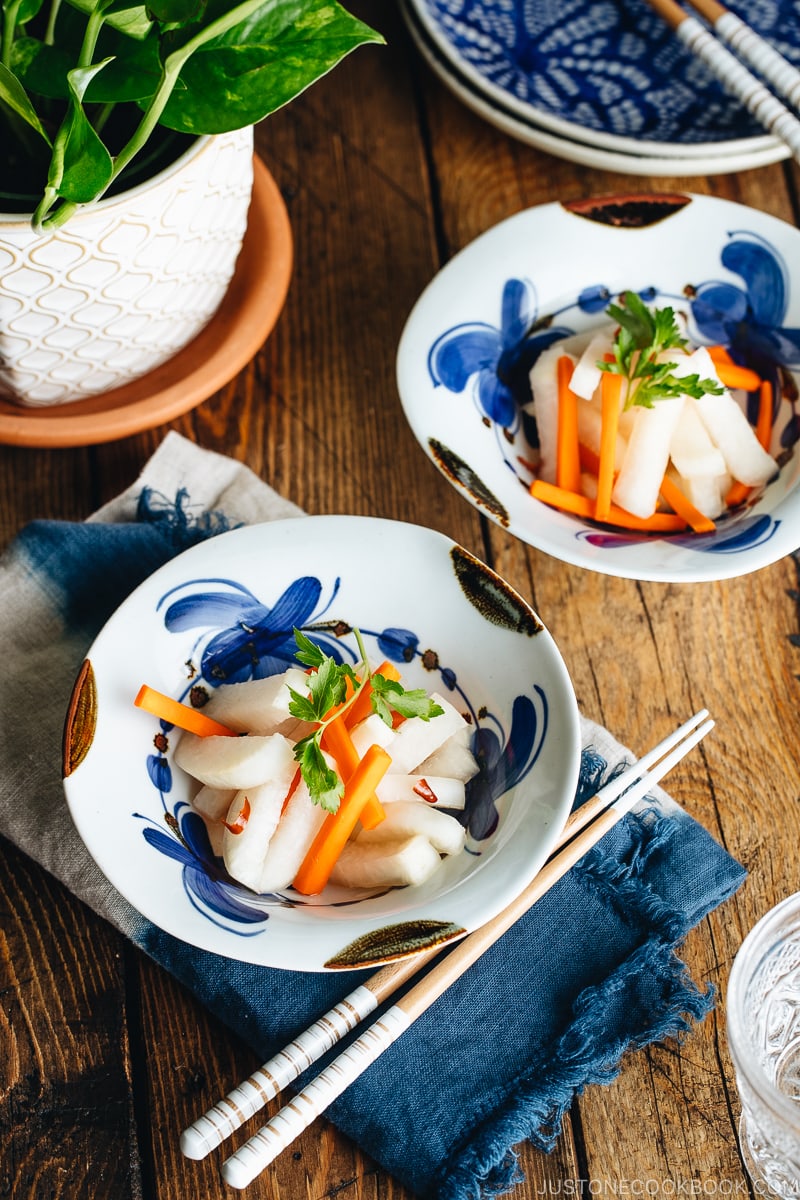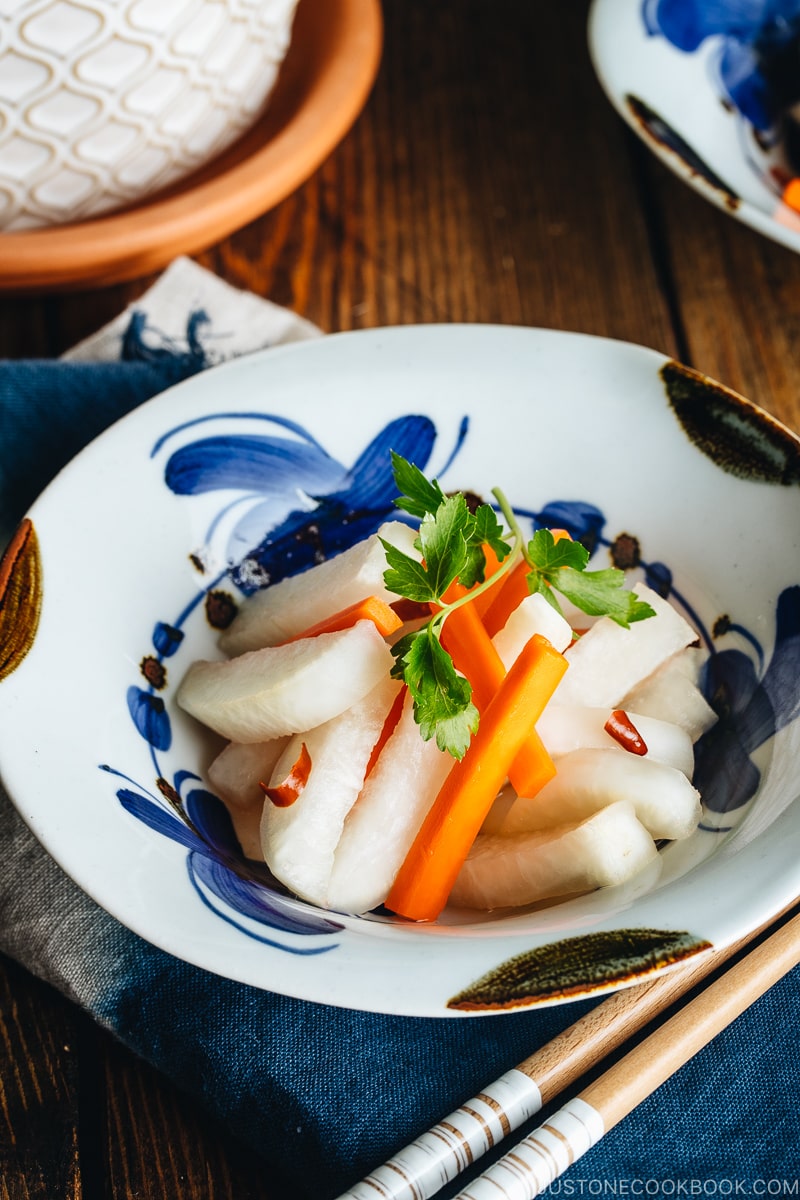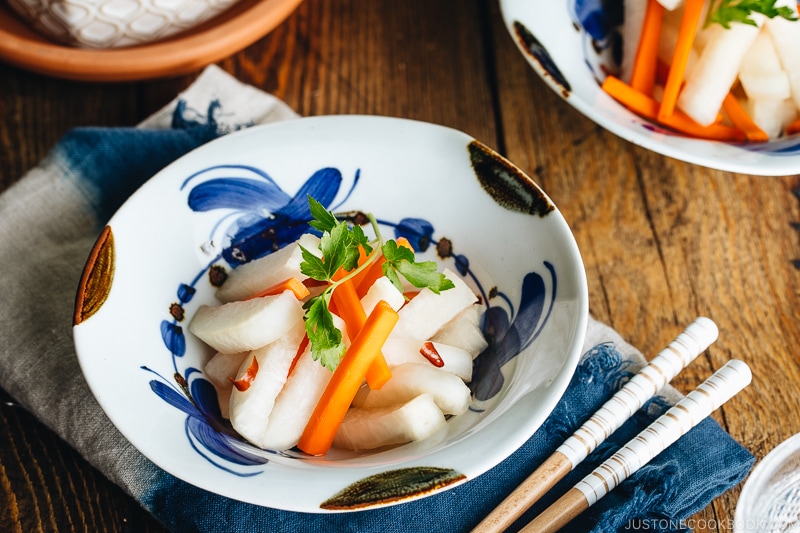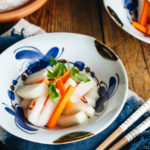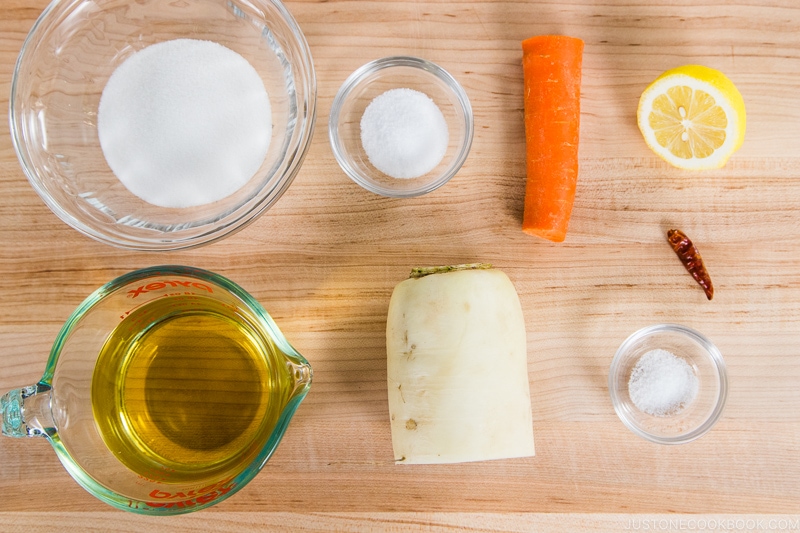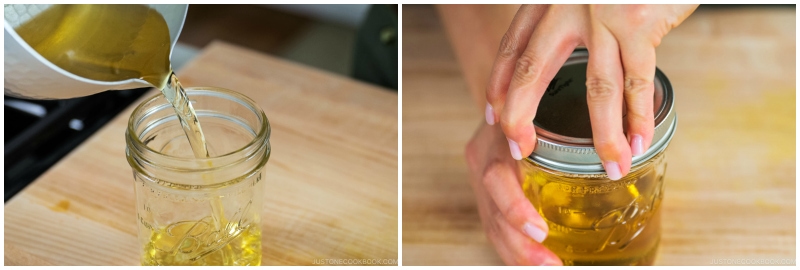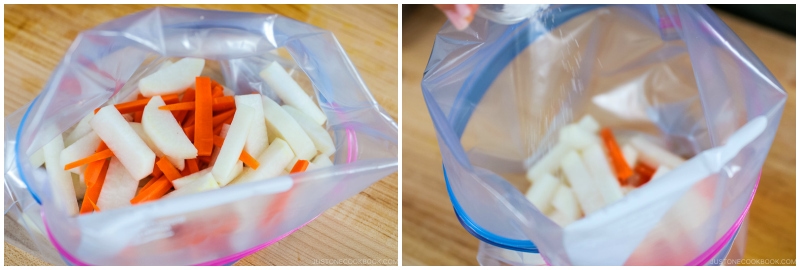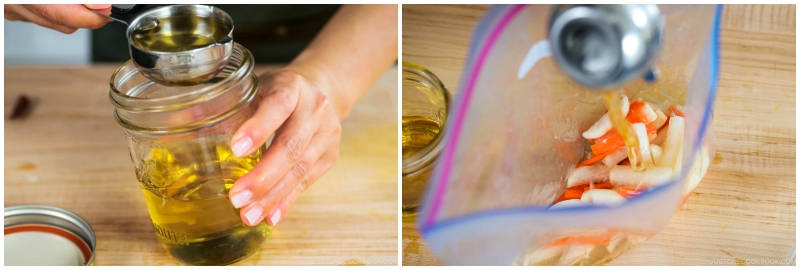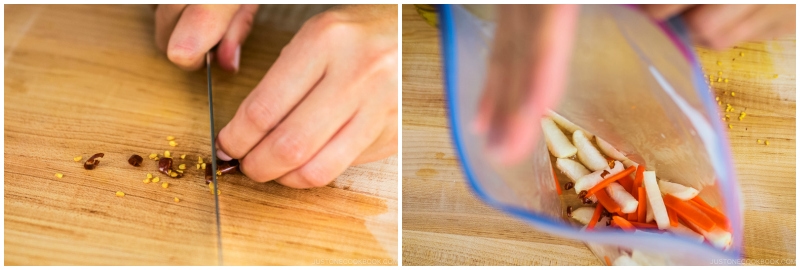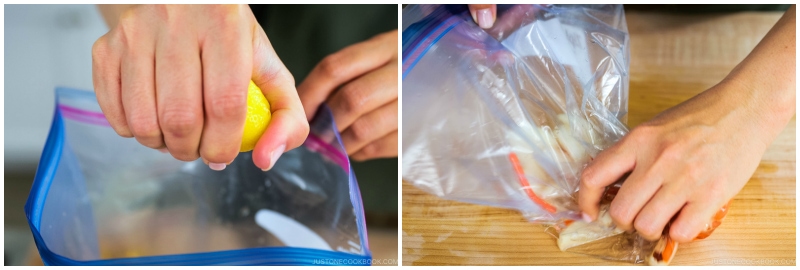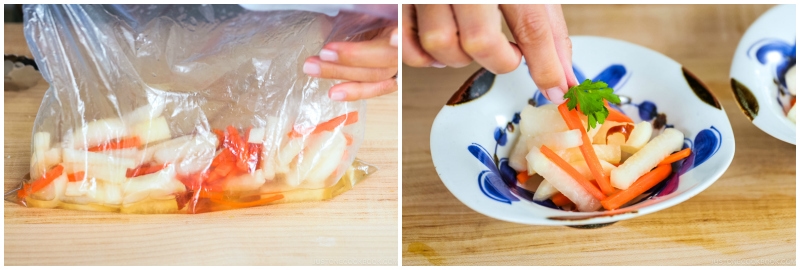Amazuzuke (甘酢漬け) is a Japanese technique of pickling fresh vegetables in sweet vinegar. You might already familiar with the most well-known example of an Amazuzuke, which is “Gari” or pickled sushi ginger. Amazu-zuke refers to sugar and rice vinegar (amazu) pickling (zuke). It is one of the very basic Japanese pickles known collectively as tsukemono (漬物). If you’re interested in learning more about different types of tsukemono, read Tsukemono: A Guide to Japanese Pickles on my blog. Tsukemono is categorized into different types based on the pickling agent:
Shiozuke (塩漬け) – salt Suzuke (酢漬け) – vinegar Amazuzuke (甘酢漬け) – sugar and vinegar Misozuke (味噌漬け) – miso Shoyuzuke (醤油漬け) – soy sauce Kasuzuke (粕漬け) – sake kasu (lees) Shiokojizuke (塩麹) – rice koji/mold-cultured rice Nukazuke (糠漬け) – nuka (rice bran) Karashizuke (からし漬け) – Japanese hot mustard karashi Satozuke (砂糖漬け) – sugar
I’m working on the Tsukemono series on Just One Cookbook, and today we will focus on Amazuzuke. In the recipe below, I’ll show you how to make Amazuzuke with daikon and carrot. It’s so ridiculously easy that any beginner cook can get a grip on. Ready to turn your vegetables into great tasting accompaniments that guarantee to add brightness to your everyday meal? Let’s do this!
3 Easy Steps to Make Daikon Amazuzuke
1. Prepare Your Ingredient
For Amazuzuke, the most commonly used vegetables are young ginger, daikon radish, radish, and turnip (kabu). Young ginger is only available in the summer while daikon, radish, and turnips are in season during winter months. They are all root vegetables and the texture and flavor improve with pickling or cooking. Before pickling, you will need to withdraw moisture out of the vegetables so that they retain their crunch and character. Other ingredients you can also use for this method of pickling:
bell pepper carrot celery cucumber lotus root
But remember, adjust the pickling time as each vegetable is different.
2. Make Amazu (Sweet Vinegar)
All you need is just 3 ingredients for the pickling solution: rice vinegar, sugar, and salt. Put all the ingredients in a saucepan to meld and let cool completely. You can keep the finished Amazu for 2-3 months in the refrigerator, and use it in batches. Do you need to use rice vinegar? Ideally, yes. The taste of rice vinegar is much milder and easier to consume than other types of vinegar, and because of that, you can use less sugar. If you use another type of vinegar, please adjust the amount of sugar. The rice vinegar makes this pickle more “Japanese” style pickle.
3. Pickle Time!
Combine the vegetables and Amazu and in several minutes (or few hours, if you prefer), they are ready to enjoy! How simple is that? Let’s make a batch of the Amazu today and transform your vegetables into delicious sweet tangy bites that can wake up your appetite!
Wish to learn more about Japanese cooking? Sign up for our free newsletter to receive cooking tips & recipe updates! And stay in touch with me on Facebook, Pinterest, YouTube, and Instagram.
